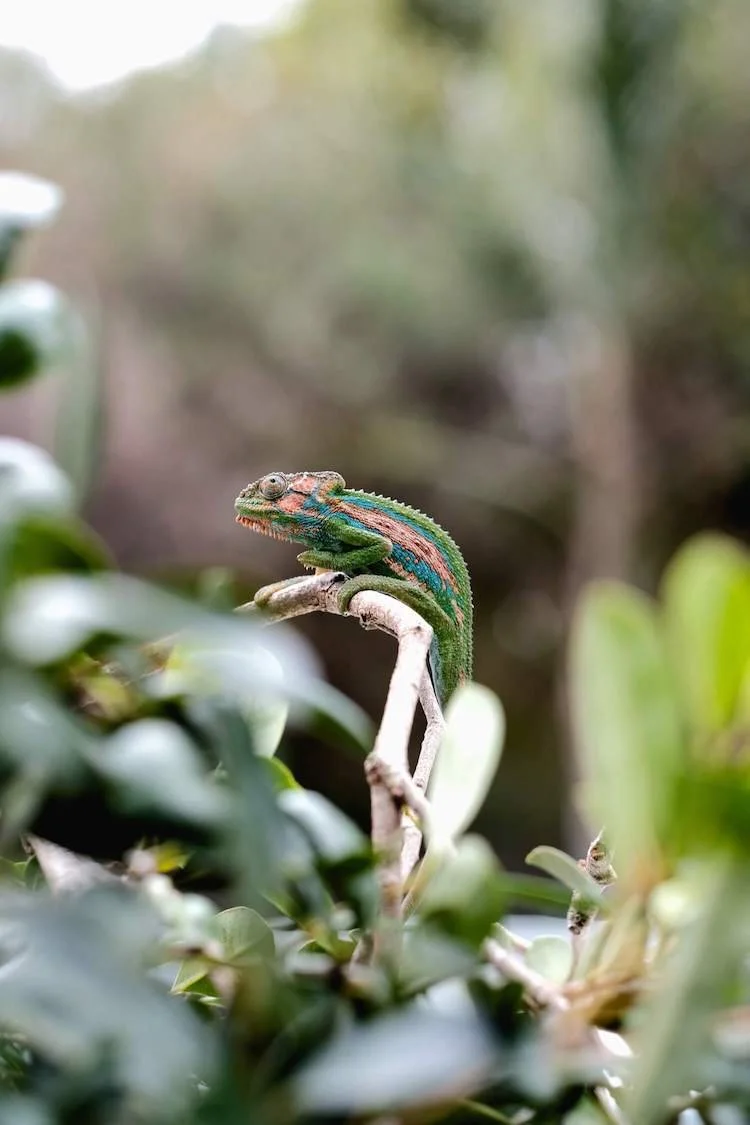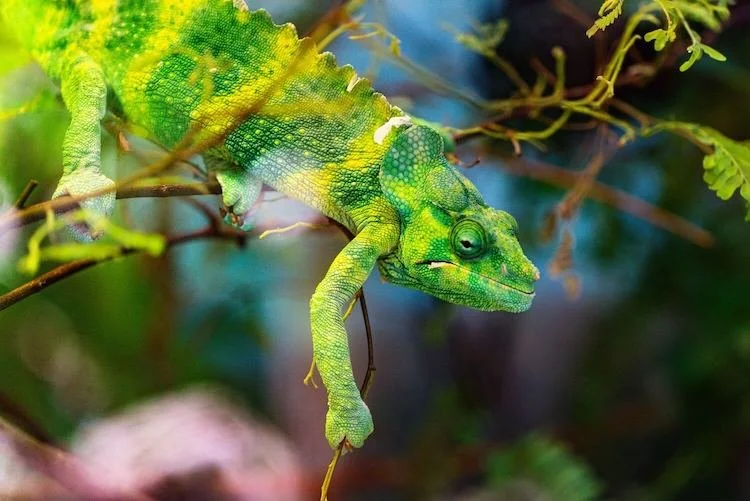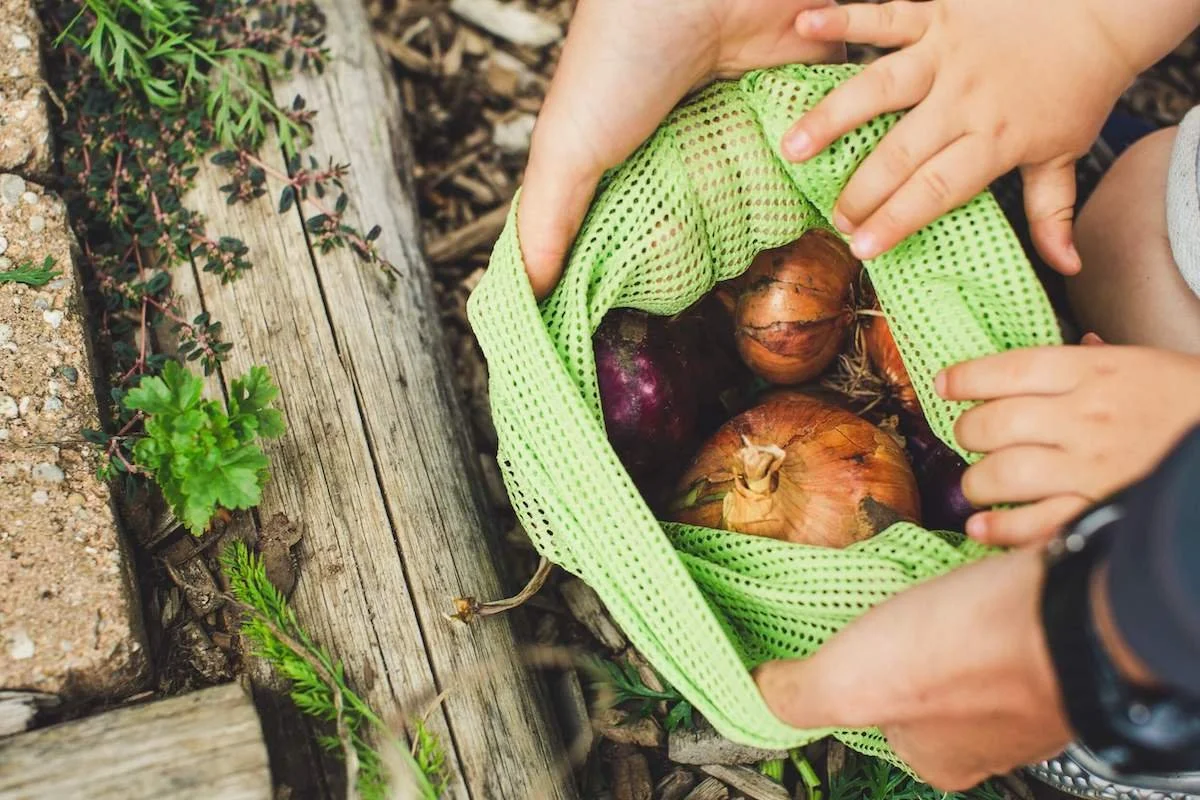10 Safe & Non-Toxic Plants for Chameleons
Owning a pet chameleon is one of the most rewarding experiences in life. It may seem odd to some, but the gorgeous little animals come with a ton of personality, and you get to watch them change colors as they move around your home.
Chameleons are low-energy pets. That means they are slow-moving and do not take a lot of work to be happy.
They might just remind you to slow down and enjoy life too!
The easiest way to make sure' they're healthy for a long time and enjoy life is to build an environment with plenty of plant life.
The only problem is that some plants can be dangerous.
I’ve put together a quick list of the best non-toxic plants for chameleons that are a great addition to make your space more inviting.
This post does contain some affiliate links which means The Honest Consumer may receive a commission if you decided to purchase. Our commission is at no additional expense to you!
The 10 Best Non-Toxic Plants for Chameleons
If you're looking for some plants for your home or for chameleon enclosures that are safe, these are some of the best plants you can pick.
We do recommend doing additional research on your own to make sure you pick the best and safest plant for your pets as the health and safety of everyone in your household is the most important thing. Here is our list of safe plants for chameleons:
Golden Pothos
Golden Pothos is probably the most common choice for your chameleon's terrarium because it is incredibly resilient.
All you need is the occasional watering an a little indirect sunlight.
This plant loves to grow and spread, so be sure to watch it from getting outside your enclosure, or else you will wake up to your loving chameleon exploring your home without guidance.
Golden Pothos Care Tips:
Keep away from direct sunlight. Use indirect lighting and watch for any yellowing leaves that denote stress.
Water three times per week.
Keep in temperatures between 60 to 90 degrees F
Ficus Plants
Ficus trees or plants are excellent non-toxic plants for chameleons because they provide the cover these fantastic animals want to feel safe.
Anything you can do to reduce stress in your pet will be good.
Some ficus plants can grow pretty tall, so keep a close eye on the forest-like addition to your pet’s habitat.
Ficus Care Tips:
Best in low to moderate lighting conditions near windows, well-lit rooms, or under UV bulbs.
Loves moist soil and a lot of humidity to thrive.
Keep temperatures above 50 degrees F.
Schefflera Tree
The Schefflera Tree is sometimes known as the dwarf umbrella tree because the green leaves droop off of their stems, similar to an umbrella covering a small creature.
They love tropical climates and misting, which is perfect for chameleons because they only drink water droplets from plants.
While these are 100% safe for chameleons, they can irritate dogs, cats, and some human skin, so be careful when handling them.
Requires a lot of sunshine to grow properly.
Mist the leaves and keep the soil moist for increased humidity.
Loves hot temperatures, preferably at 80 degrees F, but anything above 65 degrees will do.
Hibiscus Plants
Chameleons will occasionally snack on plant matter. A hibiscus plant offers both a beautiful flower for your home decor and a delicious treat for your pet.
They can get extremely tall when grown in captivity, so you will need to curate their cultivation a bit.
However, it is gratifying to watch your adorable chameleon change its colors whenever it is around the different vibrant colors of the plant's flowers.
Make sure you have a drainage system for your potting option.
Water thoroughly and then again whenever the top inch of soil dries out.
Direct sunlight is the best option on a porch or near big windows. You can also infuse the soil with some phosphorous and diluted fertilizer occasionally.
Do not let this plant get cold.
Grape Ivy
Chameleons spend 99% of their time up in trees.
While having some sturdier plants is a good idea for them to relax, you should also include lighter ivy that adds variety and some little hidy holes for your chameleon to escape the world for a bit.
Grape ivy is very easy to grow and can be manipulated into all sorts of directions and structures to elevate your chameleon's home.
Prefers direct sunlight, but nothing too harsh. Less is more.
Only water when the soil has completely dried out.
Keep in temperatures between 60 and 80 degrees. This ivy will die out in extreme temps above 80 degrees F.
Areca Palm
I chose the Areca as one of the best non-toxic plants for chameleons because it is also ranked high among the oxygen-producing indoor plants on most scientific lists.
Chameleons are used to vibrant rainforests with oxygen-rich air. Having an easy-to-maintain indoor plant that improves the oxygen in your home or apartment also helps your pet stay healthy.
The Areca has sturdy stems packed close together and catches water droplets well when misting.
Your chameleon will spend happy hours patiently sitting inside the enclosure in the dense plant, sucking down water.
Wait for the loosely packed soil to dry out before watering again. Palms are sensitive to overwatering.
Loves direct sunlight, so regular exposure is a good idea.
Thrives best at temps of 65-75 degrees F.
Rubber Plant
The Rubber Plant is a chameleon pet owner favorite because the leaves and stems are incredibly durable and thick, allowing for a natural jungle gym for your pet.
They can grow incredibly tall if left unchecked, so you may have to closely watch your cultivation.
This also provides humidity benefits in the wintertime because the thick, juicy leaves love to be misted and hold their moisture well for hours at a time.
Chameleons are native to rainforests and prefer a more humid climate in their enclosures.
Stick to indirect sunlight near a window and not under a direct UV lamp.
This one doesn't need too much water only when the soil is dry to the touch you need to water.
Rubber plants are surprisingly hardy and do well in temperatures between 60 and 65 degrees F.
Boston Fern
I wanted to include one of the more fun, non-toxic plants for chameleons on this list because the Boston Fern is so lightweight and transparent.
This plant is perfect for sunlight and shadow to dance off your chameleon's skin, making it a lot of fun to watch as they explore and shift colors.
The long stems provide plenty of shade and are dense enough for the average-sized chameleon to climb.
Keep in a soil mixture of all-purpose and peat moss.
Water often to keep the soil moist but not soggy.
Use only with indirect light.
Wandering Jew
Adding a little more color to your chameleon’s terrarium is the wandering jew.
This is a hanging plant that can adapt to pretty much any environment you place it inside.
They like to grow pretty densely, so expect this to be a favorite hiding spot for your pet.
The purple and bright green leaves are excellent base colors for your chameleon to shift its camouflage whenever it is in the mood.
Water about once a week and be sure all the soil gets wet.
It does well in bright indirect light.
Thrives well in any temperature between 50 and 80 degrees.
Weeping Fig
The Ficus Benjamina, also known by it's common name the weeping fig is a great choice for your chameleon.
The strength and durability of this plant play an important role because your pet is sure to want to climb on this one!
Weeping Fig Care Tips:
Do best in bright indirect or filtered light
Need a humid environment just like chameleons
Fairly low maintenance
Tips for Preparing Your Chameleon’s Habitat
Owning a pet chameleon is an enriching experience. These little pets add unique entertainment to your home and are surprisingly packed with personality.
When you decide to set up a new terrarium, I suggest a combination of live plants, including hanging, foliage, climbers, and filler trees.
Be sure to consider the different species of chameleon such as veiled, Jacksons, and panther chameleons as certain types of chameleons might have different requirements.
How to Create the Best Environment for Your Chameleon
The goal is to create humid conditions and an environment with leaves that can hold droplets of water and stems that are strong enough to climb on.
Including the occasional edible plant is also a significant benefit to your pet’s health and happiness.
Finish the whole thing off with a vine plant such as a creative spider plant, prayer plant, or devil's ivy constructions, and you’ll have a home fit for chameleon royalty.
Chameleons also have specific light requirements such as bright light during the day and darkness during the night, so it's important to make sure the kind of plants in the chameleon cage will survive with the light source you choose and high temperatures from humidity.
For best results large enclosures are good because with ample space you can spread out the different types of plants based on their need for natural sunlight, avoid too much light for certain plants, and also allow plants to grow to their maximum height due to a larger space.
Larger spaces are also a good choice especially important if you choose fast growing plants. If the plants are thriving this will create a more comforting environment for your pet too.
Plants to Avoid for Chameleons
Along with safe plant lists, it's also important to know what kind of plants to avoid. Let’s talk about artificial plants for a moment.
They are not directly dangerous to your pet’s well-being, but chameleons will occasionally nip on the fake plants around them.
If they bite into plastic plants or a fabric plant, they risk eating material outside their regular diet that can cause serious harm.
There are also certain live plants that are toxic to chameleons and will cause harm or death.
Even though they may look amazing in your dining room or sitting area, if you own a pet chameleon, best to gift these plants to a friend or neighbor.
And definitely do not put these in a chameleon's enclosure. Stay away from:
Zulu Fig
Fiddle-leafed Fig
Creeping Figs
Crotons (especially colorful leaves)
Philodendrons (especially sap)
I hope this guide to the best non-toxic plants for chameleons provides you with the insight and resources to bring home your new pet and have years of entertainment together. Hopefully you are able to find a good option that serves your home and your chameleon habitat.
For more ethical & sustainable fashion tips be sure to follow The Honest Consumer on social media, subscribe to our newsletter, & check out the Ethical & Sustainable Brand Directory.




















